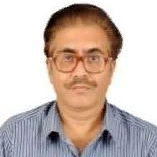International Journal of Engineering and Manufacturing (IJEM)
IJEM Vol. 10, No. 2, 8 Apr. 2020
Cover page and Table of Contents: PDF (size: 860KB)
Heterostructure Silicon and Germanium Alloy Based Thin Film Solar Cell Efficiency Analysis
Full Text (PDF, 860KB), PP.29-40
Views: 0 Downloads: 0
Author(s)
Index Terms
vegard’s law, short-circuit current density, Saturation current (Is), Generation Rate, Absorption Coefficient and open circuit voltage.
Abstract
Thin film solar cell along with enhanced absorption property will be the best, so combination of SiGe alloy is considered. The paper presented here consists of a numerical model of Si/Si1−xGex heterojunction solar cell. The addition of Ge content to Si layer will affect the property of material. The research has investigated characteristics such as short circuit current density (Jsc), generation rate G , absorption coefficient (α), and open circuit voltage (Voc), power, fill factor (FF) with optimal Ge concentration. The speculative determination of appropriate germanium mole fraction is done to get the maximized thin-film solar cell efficiency.
Cite This Paper
Ashish Kumar Singh, Manish Kumar, Dilip Kumar, S N Singh. “Heterostructure Silicon and Germanium Alloy Based Thin Film Solar Cell Efficiency Analysis ", International Journal of Engineering and Manufacturing(IJEM), Vol.10, No.2, pp.29-40, 2020. DOI: 10.5815/ijem.2020.02.03
Reference
[1] M. K. Das and S. K. Choudhary, “Ge-content dependent efficiency of Si/SiGe heterojunction solar cell,” in Proceeding of the Photonics Global Conference (PGC '12), pp. 1–4, Singapore, December 2012.
[2] Md Sadullah, Jaspinder Kaur, Rikmantra Basu, Ajay K. Sharma, Analysis of thin-film direct band-gap SiGeSn alloy based heterostructure solar cell featuring SiGe absorber layer,Optik,Volume 202,2020,163715,ISSN 0030-4026,https://doi.org/10.1016/j.ijleo.2019.163715.
[3] Ashish Kumar Singh, Jahnvi Tiwari, Ashish Yadav, and Rakesh Kumar Jha, “Analysis of Si/SiGe Heterostructure Solar Cell,” Journal of Energy, vol. 2014, Article ID 946406, 7 pages, 2014. doi:10.1155/2014/946406
[4] S.M. Sze. Physics of Semiconductor Devices. J. Wiley, New York, 2nd edition, 1982.
[5] R. People, Physics and application of Gex Si1−x /Si strained-layer heterostructures. IEEE J. Quantum Electron. 22, 1696 (1986)
[6] Ming Han Liao; Chen, C.H., "The Investigation of Optimal Si-SiGe Hetero-Structure Thin-Film Solar Cell With Theoretical Calculation and Quantitative Analysis," Nanotechnology, IEEE Transactions on , vol.10, no.4, pp.770,773, July 2011 doi: 10.1109/TNANO.2010.2077647
[7] Ashish Kumar Singh, Jahnvi Tiwari, Ashish Yadav, and Rakesh Kumar Jha, “MATLAB User Interface for Simulation of Silicon Germanium Solar Cell,” Journal of Materials, vol. 2015, Article ID 840718, 6 pages, 2015.
[8] Somenath Chatterjee, Sumeet Singh, and Himangshu Pal, “Effect of Multijunction Approach on Electrical Measurements of Silicon and Germanium Alloy Based Thin-Film Solar Cell Using AMPS-1D,” International Journal of Photoenergy, vol. 2014, Article ID 653206, 6 pages, 2014. doi:10.1155/2014/653206.
[9] S. S.Hegedus, “Current—voltage analysis of a-si and a-sige solar cells including voltage-dependent photocurrent collection,” Progress in Photovoltaics: Research and Applications, vol. 5, pp. 151–168, 1997.
[10] William Shockley and Hans J. Queisser, "Detailed Balance Limit of Efficiency of p-n Junction Solar Cells", Journal of Applied Physics, Volume 32, pp. 510-519 (1961).
[11] Zulkefle, Ahmad Aizan, Maslan. Zainon, Zaiha. Sraf. Zakaria, Kamaruzzaman Sopian, And Nowshad Amin. "Numerical modeling of silicon/germanium (Si/Ge) superlattice solar cells." In Proc. of the 7-th WSeAS int. Conf. on Renewable energy sources, pp. 233-237. 2013.
[12] S.T.Chang, et.al., “Si/SiGe hetero-junction solar cell with optimization design and theoretical analysis”, Thin Solid Films, vol. 519, pp. 5022-5025, 2011.



